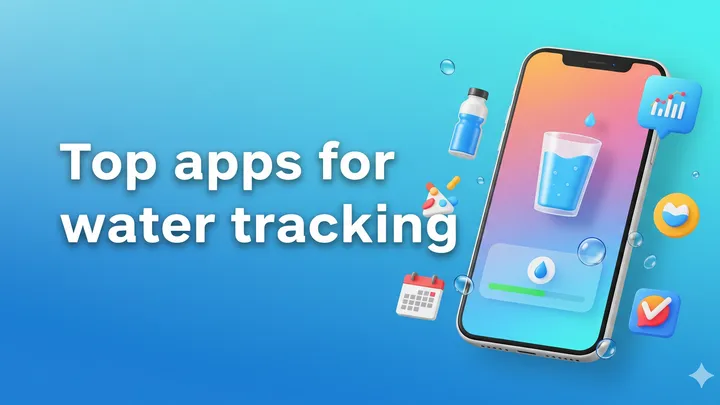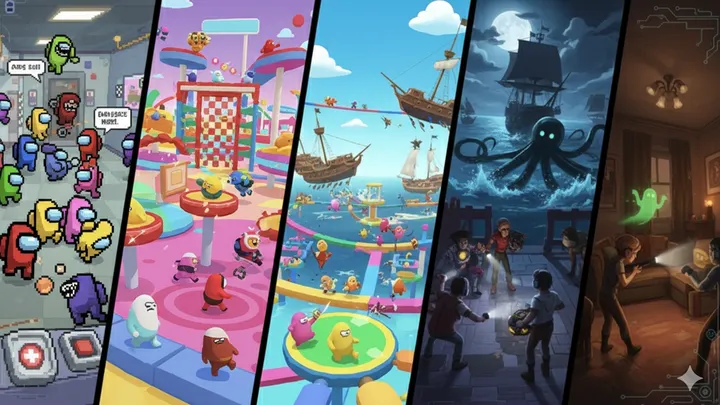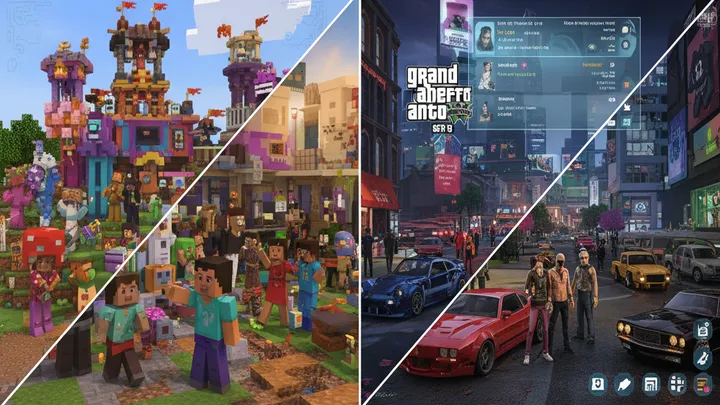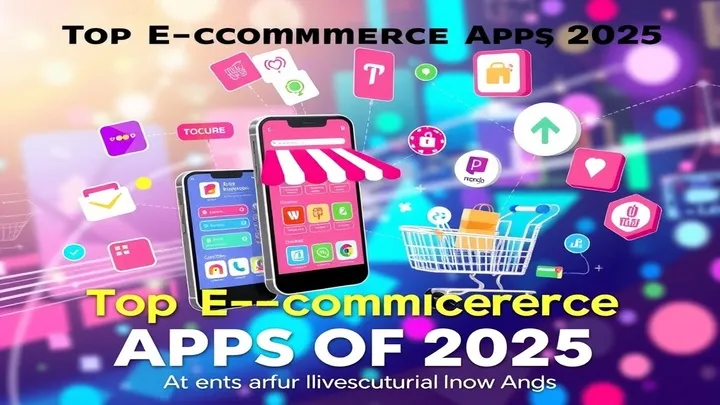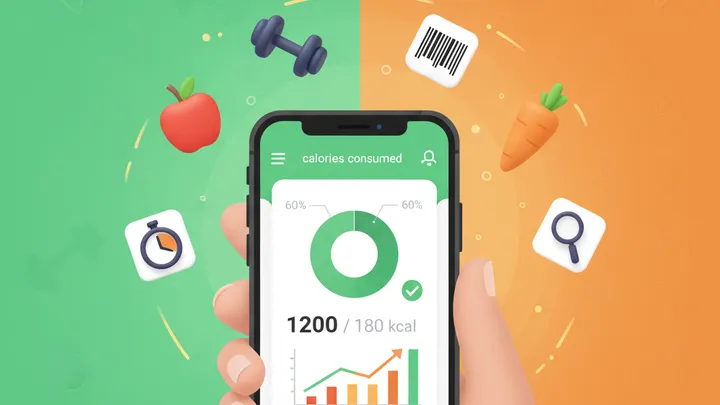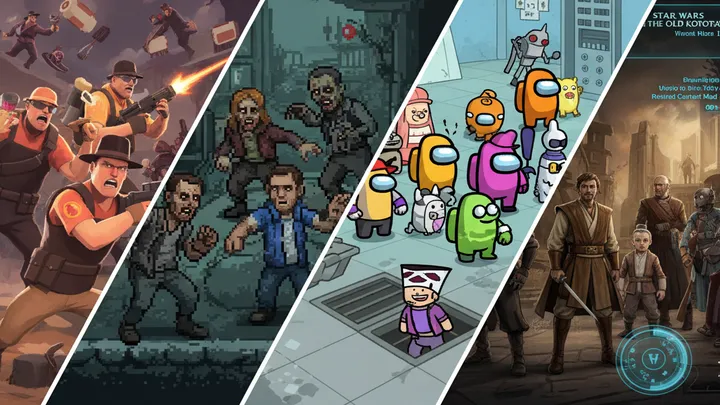Introduction
In the fast-moving world of ecommerce, 2025 marks a turning point. Mobile shopping, AI assistants, immersive AR experiences, social commerce, and sustainability are no longer nice-to-haves—they’re essential. Brands that adapt their apps to these new demands are the ones gaining traction; those that lag risk being left behind.
This article explores what makes an outstanding ecommerce app in 2025: the key trends shaping development, standout app examples, what separates the best from the rest, and how businesses (or you, as a user) can evaluate and benefit from these apps. We’ll end with actionable recommendations and thoughts for what the near future might hold.
What’s Changing: Key Trends in Ecommerce Apps in 2025
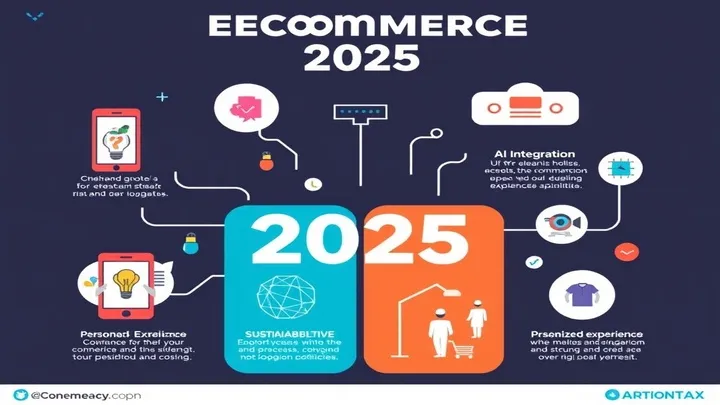
Before looking at specific apps, it’s important to understand the landscape: the forces pushing change, the tech innovations, and the customer expectations that are rising. Based on multiple recent reports, here are the major trends.
- AI-Driven Personalization
- Apps are increasingly using not just past purchase data, but real-time behavior, zero-party data (info that customers share explicitly, like preferences), and predictive analytics to tailor what the user sees: product recommendations, search results, push notifications.
- For example, if a user frequently browses eco-friendly goods, the app begins surfacing sustainable options more often. If the user tends to buy during certain sale periods, notifications may be scheduled accordingly.
- Mobile-First and UX Speed
- Mobile commerce (m-commerce) is dominating more than ever. According to sources, over 50-60 % (and in many cases ~70 %) of ecommerce transactions are happening via mobile devices. That drives the push for lightning-fast load times, streamlined checkout flows (one-click, minimal steps), and mobile-friendly navigation.
- Performance metrics like Core Web Vitals, page speed, responsiveness, visual stability are becoming essential for retention and conversion. Slow or clunky apps lose users.
- Augmented Reality (AR) & Virtual Try-On
- AR/VR features are being integrated to let users “try before they buy” in new and interactive ways: visualizing furniture in rooms, virtually applying makeup, seeing how clothes might look, etc. These reduce returns and increase confidence.
- Virtual fitting rooms and smart visual search tools (e.g., style matching from photos) are also growing in popularity.
- Voice Commerce & Conversational Interfaces
- As voice assistants and smart speakers proliferate, apps are adapting to allow voice search, voice-activated shopping and orders, or at least voice commands inside the app. This helps accessibility, and matches user expectation for hands-free experiences.
- Social Commerce and Content-Driven Sales
- Integrations with social platforms (Instagram, TikTok, WhatsApp, etc.) are now standard. Direct shopping from social feeds, live shopping events, influencer integration, short video content embedded in product pages—these help discovery and impulse purchases.
- Content commerce (blogs, user reviews, video demos, UGC) helps build trust and gives shoppers more context.
- Omnichannel & Hybrid Commerce (Including Physical Stores)
- For brands with physical presence, connecting app, website, and stores to deliver seamless experiences: click-and-collect (buy online, pick up in store), in-store returns for online purchases, unified loyalty programs, etc.
- Even pure online brands are exploring “pop-ups” or partnerships to give some physical touchpoint.
- Sustainability, Ethical Sourcing, Transparency
- Eco-friendly packaging, carbon footprint visibility, ethical supply chains, and “green” product lines are increasingly part of what customers expect. Apps that highlight these and allow filtering (e.g., show me sustainable products only) are gaining favor.
- Headless Commerce & Modular Architectures
- To speed up innovation, many apps are moving toward headless or decoupled front-end/back-end architectures. This allows more flexibility: you can redesign interface, add new channels (mobile app, smartwatch, in-store kiosk, etc.) without rewriting the backend.
- Security, Privacy & Regulatory Compliance
- With more data collection and AI, privacy regulations (GDPR, CPRA, etc.) loom large. Also, users expect secure payment, protection of their personal info. Apps that are transparent about privacy, that allow users control over data, perform strong security audits, etc., get trust.
- Subscription Models & Loyalty
- More apps are offering subscription options (e.g. “subscribe & save”) and reward/loyalty programs to retain customers. Push marketing via loyalty apps (special discounts, early access) forms part of the retention toolbox.
What Makes a Great Ecommerce App in 2025
Having trends is one thing; implementing them well is another. Here are qualities that distinguish outstanding ecommerce apps from mediocre ones:
- Seamless Checkout & Payment Options: Multiple payment methods (cards, digital wallets, BNPL), fast checkout, fewer barriers.
- User Experience & Performance: Clean UX, responsive interface, minimal friction.
- Rich Product Discovery Tools: Good search, filtering, visual search, recommendations, AR/VR previews.
- Strong Content & Social Integration: Reviews, UGC, influencer content, live streaming.
- Transparency & Trust Features: Product origin, sustainability flags, honest reviews, clear returns policy.
- Amazing Support & Post-Purchase Experience: Order tracking, helpful customer service, flexible returns, notifications.
- Scalability & Flexibility for Business Owners: Modular architectures, easy updates, extensibility (third-party plugins or integrations).
Top Ecommerce Apps & Platforms of 2025: Standout Examples
Now, let’s look at specific apps or platforms that illustrate these features and trends. These are apps that, as of mid-2025, are achieving high adoption, innovating with new UX/feature sets, and winning praise or market share.
1. Temu
- Overview: Temu is an online marketplace under PDD Holdings that has expanded rapidly to over 90 markets by April 2025. It offers very low-cost consumer goods shipped directly from vendors (many in China), with efforts to improve local seller integration and localized supply.
- Strengths: Highly competitive pricing; gamified shopping/referral programs; wide variety of products; aggressive marketing and massive download numbers. The Local Seller Program is intended to reduce shipping times and bring more regionally relevant inventory.
- Challenges: Concerns around product quality; regulatory scrutiny for its supply chain practices; issues around intellectual property & data privacy that accompany “too cheap” models.
- Why It Stands Out: Temu exemplifies cost-leadership, scale, and fast adoption—especially among price-sensitive shoppers in many geographies. It shows what can happen when you combine aggressive logistics, global sourcing, and mobile app convenience.
2. Meesho
- Overview: Meesho is a major player in India, especially in value-commerce (affordable goods + fashion + home). It operates a social commerce model: resellers use social media to market, and Meesho supports this with logistics, payment tools, etc.
- Strengths: Deep penetration in second-/third-tier cities; strong reseller ecosystem; integrating content commerce and short video / creator tools; logistic innovations (“Valmo” logistics marketplace); multilingual AI-based support.
- Challenges: Maintaining margins in low-price segments; ensuring quality; competition from both large e-commerce incumbents and other bargain apps.
- Why It Stands Out: Meesho shows how social commerce + content + logistics + value pricing can unlock large markets that are underserved by premium brands.
3. ASOS
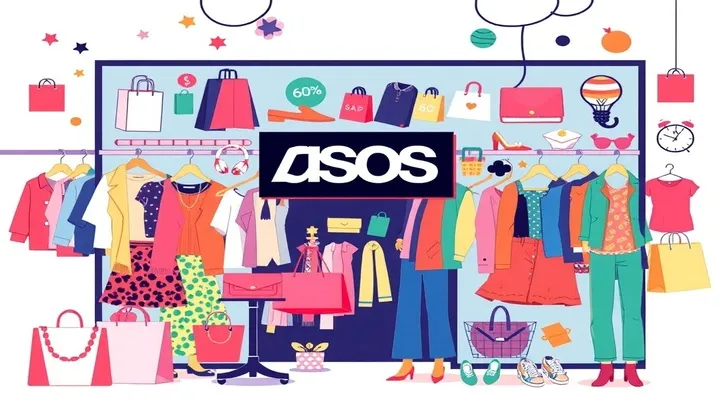
- Overview: A well-known fashion retailer based in the UK but global in reach. ASOS has invested heavily in its mobile app UX, visual search/style match, and mobile first design.
- Strengths: Good design; strong brand identity; strong content integration; visual search (style matching) allowing users to upload or snap images for similar items; strong inventory of fashion brands; frequent app updates to improve mobile experience.
- Challenges: Fashion is competitive; managing returns (logistics, cost); balancing inventory, speed vs sustainability; meeting high expectations of style-conscious users.
- Why It Stands Out: ASOS is an established brand that continues to innovate: not just in what products it carries, but how it helps customers find what they want (visual search, UX, mobile-optimized browsing) and engaging them with content.
4. Sephora
- Overview: Sephora is a beauty and cosmetics retail brand that has used its app to integrate digital-in-store experience: virtual try-on tools, loyalty programs, product scanning in-store for reviews, etc.
- Strengths: AR/virtual try-on for makeup; strong loyalty program; rich product content; curated and branded content (tutorials, reviews); ease of navigation (beauty categories can be confusing, but Sephora works to simplify with design).
- Challenges: Beauty product use is very personal; virtual try-on has to be realistic; matching customer expectations of colors/sizes; also the cost of maintaining high-quality content and keeping up with new product launches.
- Why It Stands Out: Sephora embodies how to blend physical and digital beauty retail: letting users try virtually, compare, read reviews, and benefit from loyalty—all inside a slick app.
5. Shopify / Shopify Mobile & Shop App
- Overview: Shopify is less a single consumer app and more a platform powering many ecommerce brands; but its own apps (Shopify store management for merchants, as well as the “Shop” consumer-side app) show best practices. Also Shopify’s technological stack (e.g. Headless commerce, React Native / Hydrogen / Remix etc.) is shaping app development.
- Strengths: For merchants, extremely flexible platform with app marketplace, many integrations (payments, logistics, marketing automation). For consumers, the “Shop” app offers simplified tracking of orders from multiple stores; deals; curated storefronts. Shopify also invests in performance, modular architecture.
- Challenges: For small merchants, cost and learning curve of maintaining a store, integrating multiple apps. For some consumers, fragmentation (many small Shopify stores) means varied experience, quality, return policies, etc.
- Why It Stands Out: Because Shopify powers so many ecommerce storefronts, its innovations (in UX, app performance, app marketplace, headless commerce) have ripple effects: what works on Shopify often becomes standard elsewhere.
Other Noteworthy Apps & Platforms
Here are a few more apps / platforms to watch. They may not top every metric, but they illustrate interesting new directions or have potential to grow rapidly.
- Everlane / Patagonia-style brands that are pushing sustainability features heavily (product materials, carbon footprint, ethical sourcing).
- Brands that are deeply integrating influencer / creator tools, e.g. apps that allow creators to build storefronts, co-sell, or livestream sales.
- Specialized niche apps (for example, wellness, home decor, secondhand / resale), which are benefiting from consumers’ desire for ethical consumption and more unique items.
- Apps using visual search / image recognition so users can search via photo (e.g. snap a shirt you like, find similar ones).
- Localized apps catering to regional languages, payment methods, local delivery/logistic infrastructure. These often outperform global giants in specific markets when done right.
Comparative Analysis: What Works, What Doesn’t
Below is a comparative discussion of strengths and weaknesses across these examples and some lessons learned.
Feature / DimensionApps that ExcelCommon Weaknesses / RisksPrice / ValueTemu, Meesho: drive growth by focusing on low-cost goods, aggressive pricing, efficient supply chains.Low cost often means thin margins; possible issues of quality; regulatory scrutiny; potential ethical concerns in sourcing / labor.Experience & InnovationASOS, Sephora: invest heavily in UI/UX, AR, personalization, visual search, immersive content.High R&D / tech costs; can be difficult to scale real realism in AR; risk of overpromising (virtual try-on that doesn’t match reality).Logistics & DeliveryLocal seller programs (like Temu’s) help reduce delivery time; BOPIS & omnichannel in store-led brands help.Fast delivery costs; international shipping can face customs, delays; reverse logistics (returns) costly.Trust & TransparencyApps that display user reviews, clear return policies, transparency in sourcing, sustainable options (like Sephora, niche sustainable brands) tend to retain customers better.Fake reviews; unclear origin of goods; sustainability “greenwashing” criticisms.Retention & LoyaltyLoyalty programs, subscriptions, content engagement, push notifications (done well) help.Notifications can become spammy; subscription fatigue; need to balance engagement vs privacy concerns.Scalability / TechnologyHeadless architecture, modular design, strong data analytics & AI; strong app performance.Tech debt; poor architecture leads to slow updates; overdependence on third-party vendors which can lead to integration problems.
How to Evaluate / Choose an Ecommerce App (As a Business or Consumer)
Depending on whether you are a business owner picking platform/tools/app or a customer choosing which apps to use, the criteria will differ. But some principles apply broadly.
If you are a business / merchant:
- Identify your target market: price sensitivity, geography, mobile vs desktop usage.
- Prioritize mobile UX, performance, and seamless checkout. A few seconds delay or extra steps cost conversions.
- Choose tools or platforms that integrate well (payments, logistics, marketing automation, loyalty, CRM).
- Ensure your app supports social commerce / content: live stream, Instagram/TikTok feeds, UGC.
- Build trust: clear return policies, quality assurance, transparent sourcing.
- Consider sustainability and environmental impact—both because consumers care, and because regulators are paying attention.
- Use data wisely: use analytics, A/B testing, feedback loops; but also ensure compliance with privacy laws.
If you are a consumer / shopper:
- Look for apps with good reviews on transparency: product reviews, clear returns, etc.
- Try apps that offer immersive visuals/AR try-on for categories like fashion, furniture, beauty.
- Use apps that save you time: push notification wisely used; wish list features; effective search / filtering.
- Be mindful of hidden costs (shipping, customs, returns).
- Consider apps that align with your values (sustainability, ethical brands, local businesses).
Potential Risks & Challenges
Even the best ecommerce apps have to navigate several headwinds in 2025:
- Quality vs price trade-offs: Ultra cheap goods sometimes have quality, safety, ethical issues.
- Data privacy & regulation: With AI and heavy personalization, laws (like GDPR, California’s laws, others) are becoming stricter; noncompliance is risky.
- Customer expectations rising: Delivery speed, return ease, UX polish—what was “good enough” is no longer enough.
- Competition saturation: Many apps are trying similar features (visual search, AR, live shopping), so differentiation becomes harder.
- Logistics / supply chain disruptions: Global consequences from trade policy, shipping delays, inflation etc.
Case Study: What Temu & Meesho Teach Us
To illuminate more concretely, let’s briefly compare two of the standout value-commerce apps—Temu and Meesho—and what lessons can be drawn.
AspectTemuMeeshoLessonsPricing & Product AssortmentVery broad product assortments, aggressively priced. Low margins, large volumes.Similar focus on affordability; strong in clothing & household items; uses resellers/social tools.Going low cost can drive growth—but you must manage customer perception of quality. Offering variety helps discoverability.Logistics & Local SellersTemu’s Local Seller Program attempts to reduce shipping times & regional relevance.Meesho uses its own logistic marketplace (Valmo) to improve delivery & coverage.Localization matters. Shipping time, local inventory or seller involvement, are key differentiators.Marketing & ContentHeavy marketing spend; referral programs; aggressive promotions.Content commerce (creator tools, short videos); reseller networks that use social platforms.Marketing that integrates social content and community (resellers, influencers, UGC) often beats pure ad spend.Trust, Quality, ReputationSome pushback / concerns about product reliability, IP issues, return policies.Meesho has to balance growth with eliminating counterfeit or poor-quality items; strong attention to policy enforcement.Brand trust is built over time. As cost lowers, quality and transparency must keep pace.
What to Expect in the Near Future
Looking ahead from mid-2025 toward 2026 and beyond, there are a few likely developments to watch:
- Deeper AI Agents & Autonomous Shopping: tools that can predict needs, reorder automatically, or perform shopping on your behalf based on past behavior.
- Better AR/VR Realism: more lifelike virtual try-on, ambient augmented reality in homes, furniture trials etc.
- More Converged Social + Ecommerce Spaces: platforms where the lines between social media, messaging, and shopping blur further. Monetization in live content, user streams etc.
- Growing Importance of Ethical & Sustainable Practices: demands for transparency, carbon reporting, reduced waste, circular economy models (resale / refurbished) will grow.
- Voice & Smart Device Shopping: more use of voice assistants; perhaps purchases via TV, wearables, or home devices.
- More Personalized Loyalty & Subscription Ecosystems: customers expect rewards, recurring options, curated boxes, etc.
Recommendations: What Businesses Should Do & What Consumers Should Use
Here are some concrete recommendations:
- For Businesses / App Makers:
- Audit your app’s user journey, especially on mobile: reduce any friction, speed up checkouts.
- Introduce or improve personalization: both in content/products shown AND in notifications / marketing. Use zero- or first-party data with respect for privacy.
- Explore AR/visual tools where relevant (fashion, beauty, furniture).
- Build or integrate social / content commerce tools: live shopping, short video, UGC.
- Think omnichannel if you have physical presence: click-and-collect, unified loyalty, in-store innovations connected to the app.
- Emphasize trust, transparency: reviews, return/quality policies, ethical sourcing.
- Monitor regulatory and data privacy shifts, ensure compliance.
- For Shoppers / Consumers Looking for Good Apps:
- Choose apps with good returns policies, verified reviews, transparent product info.
- Use price-comparison tools or visual search to find what you want faster.
- Try apps that support AR or virtual try-on in categories where visuals matter.
- Use loyalty, subscription, or referral benefits when available.
- Keep an eye on shipping times, hidden costs; sometimes “cheap” isn’t cheapest when returns are involved.
Conclusion
2025 is a watershed year for ecommerce apps. The convergence of mobile dominance, AI personalization, immersive AR, social content, sustainability, and seamless omnichannel integration is redefining what consumers expect. Apps that deliver speed, delight, trust, and value are the ones winning users’ hearts—and wallets.
Apps like Temu, Meesho, ASOS, Sephora, and Shopify aren’t perfect, but they illustrate what’s possible when features, UX, content, logistics, and ethics align. Whether you're building an ecommerce app, choosing tools to power one, or simply deciding which shopping apps to use, paying attention to these trends can put you ahead.








